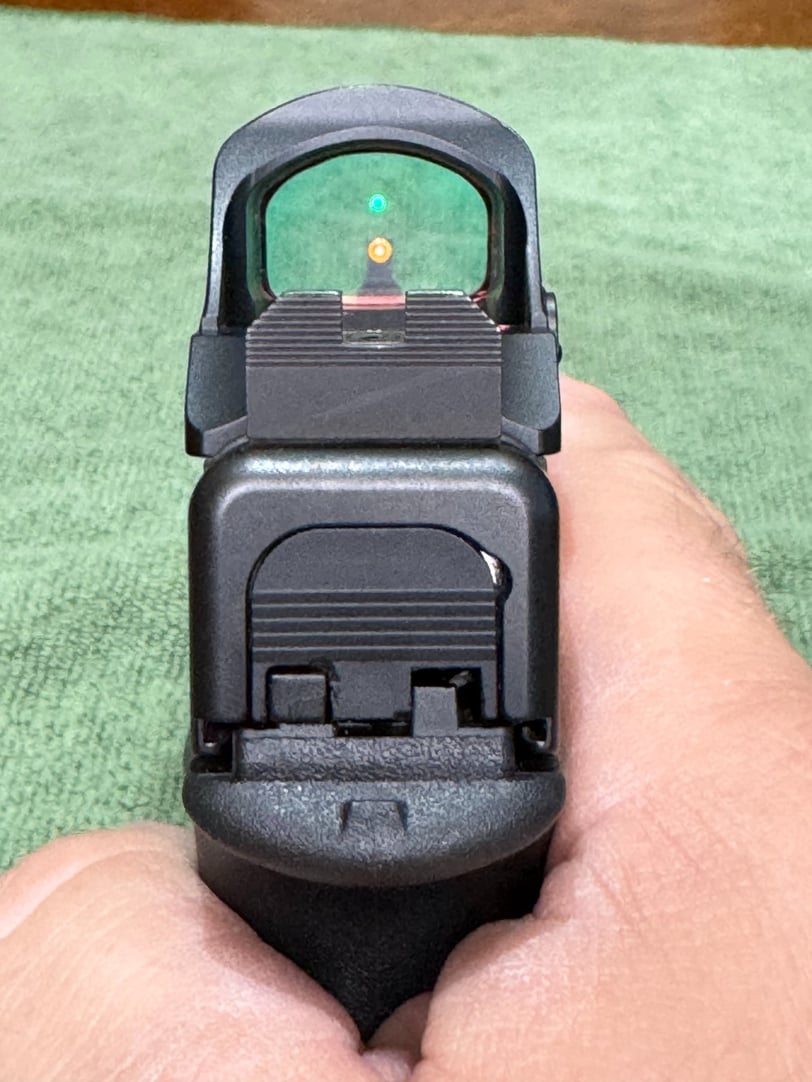Do You Really Need a Red Dot Optic on Your Carry Pistol?
Last week, we dove into the world of civilian shootings and the distances at which these encounters typically occur, 9’-15’ feet. While the study we referenced was a small one and completed probably sometime around 2019, it’s still stirring up a lot of buzz and even further questions. We now have access to something the researchers back then could only dream about—cameras. They’re everywhere, capturing real-life incidents with startling clarity. This avalanche of modern data has started to be analyzed, and I’ll keep researching the results as they come out to bring them to you. They just might make you rethink your setup.
Now, let’s get to the burning question that’s been asked many times:
“Do I really need an optic on my carry pistol if most shootings happen at such close distances?”
Great question! But first, let’s review those numbers from last week’s post:
4% of civilian shootings happen at 2 yards or less.
87% occur between 3–5 yards (that’s 9–15 feet—think “social distancing but with much higher stakes”).
The rest occur beyond 5 yards.
So, 96% of these incidents take place beyond arm’s reach. Now, imagine this: your heart is pounding, your hands are shaking, and your brain is screaming, “Do something!” Every split second counts. A red dot optic might just be the difference between success and a really bad day.
Here’s a real-world scenario along those same lines:
Remember the attempted assassination at the Trump International Golf Club in September 2024? Reports say 4–6 shots were fired from just 5 feet away—and not a single one hit the target. Five feet! That’s closer than your neighbor at a backyard barbecue. Sure, stress is a beast, even for someone presumably well-trained. But wouldn’t you feel better knowing you had every advantage possible?
And let’s be real—some details from that story might never come to light. But still… five feet. Five feet! Even if it was 5 yards seems a bit unacceptable for the Secret Service.
My Take On the Need for a Red Dot:
If I’m dealing with a threat at 9–15 feet, you bet I want my red dot optic. It helps me acquire a sight picture faster, aim with confidence, and fire accurately—even when the adrenaline is cranked up to 11. From concealment, I can draw, aim, and fire in seconds. And when seconds count, wouldn’t you want every possible tool working in your favor?
What About the Cost?
Ah yes, the “it’s-too-expensive” excuse. That used to hold some water, but not anymore. Reliable red dots have become surprisingly affordable. Plus, many pistols now come factory-ready for optics with optic-cut slides. The excuses are running out, my friend.
If you’ve been hesitating, ask yourself this: Are you as prepared as you could be without one?
Why I’m Sold:
Over the past year, I’ve been running a Glock 45 MOS with a Holosun 407C-X2 Green. This duty-sized 9mm is a beast. For concealed carry, I switch to a Glock 48 platform with a Holosun 507K. Both setups, Absolute game-changers. (And trust me, next week, I’ll break down what worked, what didn’t, and what I wish someone had told me before I bought my first optic!)
Why Red Dots Are Superior
Let’s cut the fluff. When it comes to fast, accurate shooting, red dots leave iron sights in the dust. Yes, there’s a learning curve. And sure, some folks (looking at you, astigmatism sufferers) might face unique challenges. But for most shooters, the benefits far outweigh the drawbacks.
Real-World Advantages
Red dots let you stay target-focused. On the range, this might seem like a minor perk. But in a violent confrontation? It’s a massive tactical advantage. Being able to see your sight clearly without losing focus on the threat is a game-changer—and that’s the kind of edge you want when everything’s on the line.
So, Do You Need a Red Dot?
No, you don’t need one. But if you want to acquire your sight picture faster, shoot more accurately under stress, and move with confidence, a red dot can make a world of difference. And if you’re a newer shooter or haven’t spent much time at the range, the transition to red dots is easier than you might think.
Next week, I’ll share my top red dot recommendations, the mistakes I made when choosing my first one, and tips to help you avoid my missteps. You won’t want to miss it.
Until then—stay safe, stay alive, and maybe start saving up for that optic.

